from Justice on 03/01/2014 09:28 PM
In the year 730 B.C., a man by the name of Piye decided the only way to save Egypt from itself was to invade it. Things would get bloody before the salvation came.
“Harness the best steeds of your stable,” he ordered his commanders. The magnificent civilization that had built the great pyramids had lost its way, torn apart by petty warlords. For two decades Piye had ruled over his own kingdom in Nubia, a swath of Africa located mostly in present-day Sudan. But he considered himself the true ruler of Egypt as well, the rightful heir to the spiritual traditions practiced by pharaohs such as Ramses II and Thutmose III. Since Piye had probably never actually visited Lower Egypt, some did not take his boast seriously. Now Piye would witness the subjugation of decadent Egypt firsthand—“I shall let Lower Egypt taste the taste of my fingers,” he would later write.
North on the Nile River his soldiers sailed. At Thebes, the capital of Upper Egypt, they disembarked. Believing there was a proper way to wage holy wars, Piye instructed his soldiers to purify themselves before combat by bathing in the Nile, dressing themselves in fine linen, and sprinkling their bodies with water from the temple at Karnak, a site holy to the ram-headed sun god Amun, whom Piye identified as his own personal deity. Piye himself feasted and offered sacrifices to Amun. Thus sanctified, the commander and his men commenced to do battle with every army in their path.
By the end of a yearlong campaign, every leader in Egypt had capitulated—including the powerful delta warlord Tefnakht, who sent a messenger to tell Piye, “Be gracious! I cannot see your face in the days of shame; I cannot stand before your flame, I dread your grandeur.” In exchange for their lives, the vanquished urged Piye to worship at their temples, pocket their finest jewels, and claim their best horses. He obliged them. And then, with his vassals trembling before him, the newly anointed Lord of the Two Lands did something extraordinary: He loaded up his army and his war booty, and sailed southward to his home in Nubia, never to return to Egypt again.
When Piye died at the end of his 35-year reign in 715 B.C., his subjects honored his wishes by burying him in an Egyptian-style pyramid, with four of his beloved horses nearby. He was the first pharaoh to receive such entombment in more than 500 years. A pity, then, that the great Nubian who accomplished these feats is literally faceless to us. Images of Piye on the elaborate granite slabs, or stelae, memorializing his conquest of Egypt have long since been chiseled away. On a relief in the temple at the Nubian capital of Napata, only Piye’s legs remain. We are left with a single physical detail of the man—namely, that his skin was dark.
Piye was the first of the so-called black pharaohs—a series of Nubian kings who ruled over all of Egypt for three-quarters of a century as that country’s 25th dynasty. Through inscriptions carved on stelae by both the Nubians and their enemies, it is possible to map out these rulers’ vast footprint on the continent. The black pharaohs reunified a tattered Egypt and filled its landscape with glorious monuments, creating an empire that stretched from the southern border at present-day Khartoum all the way north to the Mediterranean Sea. They stood up to the bloodthirsty Assyrians, perhaps saving Jerusalem in the process.
Until recently, theirs was a chapter of history that largely went untold. Only in the past four decades have archaeologists resurrected their story—and come to recognize that the black pharaohs didn’t appear out of nowhere. They sprang from a robust African civilization that had flourished on the southern banks of the Nile for 2,500 years, going back at least as far as the first Egyptian dynasty.
Today Sudan’s pyramids—greater in number than all of Egypt’s—are haunting spectacles in the Nubian Desert. It is possible to wander among them unharassed, even alone, a world away from Sudan’s genocide and refugee crisis in Darfur or the aftermath of civil war in the south. While hundreds of miles north, at Cairo or Luxor, curiosity seekers arrive by the busload to jostle and crane for views of the Egyptian wonders, Sudan’s seldom-visited pyramids at El Kurru, Nuri, and Meroë stand serenely amid an arid landscape that scarcely hints of the thriving culture of ancient Nubia.
Now our understanding of this civilization is once again threatened with obscurity. The Sudanese government is building a hydroelectric dam along the Nile, 600 miles upstream from the Aswan High Dam, which Egypt constructed in the 1960s, consigning much of lower Nubia to the bottom of Lake Nasser (called Lake Nubia in Sudan). By 2009, the massive Merowe Dam should be complete, and a 106-mile-long lake will flood the terrain abutting the Nile’s Fourth Cataract, or rapid, including thousands of unexplored sites. For the past nine years, archaeologists have flocked to the region, furiously digging before another repository of Nubian history goes the way of Atlantis.
The ancient world was devoid of racism. At the time of Piye’s historic conquest, the fact that his skin was dark was irrelevant. Artwork from ancient Egypt, Greece, and Rome shows a clear awareness of racial features and skin tone, but there is little evidence that darker skin was seen as a sign of inferiority. Only after the European powers colonized Africa in the 19th century did Western scholars pay attention to the color of the Nubians’ skin, to uncharitable effect.
Explorers who arrived at the central stretch of the Nile River excitedly reported the discovery of elegant temples and pyramids—the ruins of an ancient civilization called Kush. Some, like the Italian doctor Giuseppe Ferlini—who lopped off the top of at least one Nubian pyramid, inspiring others to do the same—hoped to find treasure beneath. The Prussian archaeologist Richard Lepsius had more studious intentions, but he ended up doing damage of his own by concluding that the Kushites surely “belonged to the Caucasian race.”
Even famed Harvard Egyptologist George Reisner—whose discoveries between 1916 and 1919 offered the first archaeological evidence of Nubian kings who ruled over Egypt—besmirched his own findings by insisting that black Africans could not possibly have constructed the monuments he was excavating. He believed that Nubia’s leaders, including Piye, were light-skinned Egypto-Libyans who ruled over the primitive Africans. That their moment of greatness was so fleeting, he suggested, must be a consequence of the same leaders intermarrying with the “negroid elements.”
For decades, many historians flip-flopped: Either the Kushite pharaohs were actually “white,” or they were bumblers, their civilization a derivative offshoot of true Egyptian culture. In their 1942 history, When Egypt Ruled the East, highly regarded Egyptologists Keith Seele and George Steindorff summarized the Nubian pharaonic dynasty and Piye’s triumphs in all of three sentences—the last one reading: “But his dominion was not for long.”
The neglect of Nubian history reflected not only the bigoted worldview of the times, but also a cult-like fascination with Egypt’s achievements—and a complete ignorance of Africa’s past. “The first time I came to Sudan,” recalls Swiss archaeologist Charles Bonnet, “people said: ‘You’re mad! There’s no history there! It’s all in
Egypt!’ ”
That was a mere 44 years ago. Artifacts uncovered during the archaeological salvage campaigns as the waters rose at Aswan in the 1960s began changing that view. In 2003, Charles Bonnet’s decades of digging near the Nile’s Third Cataract at the abandoned settlement of Kerma gained international recognition with the discovery of seven large stone statues of Nubian pharaohs. Well before then, however, Bonnet’s labors had revealed an older, densely occupied urban center that commanded rich fields and extensive herds, and had long profited from trade in gold, ebony, and ivory. “It was a kingdom completely free of Egypt and original, with its own construction and burial customs,” Bonnet says. This powerful dynasty rose just as Egypt’s Middle Kingdom declined around 1785 B.C. By 1500 B.C. the Nubian empire stretched between the Second and Fifth Cataracts.
Revisiting that golden age in the African desert does little to advance the case of Afrocentric Egyptologists, who argue that all ancient Egyptians, from King Tut to Cleopatra, were black Africans. Nonetheless, the saga of the Nubians proves that a civilization from deep in Africa not only thrived but briefly dominated in ancient times, intermingling and sometimes intermarrying with their Egyptian neighbors to the north. (King Tut’s own grandmother, the 18th-dynasty Queen Tiye, is claimed by some to be of Nubian heritage.)
The Egyptians didn’t like having such a powerful neighbor to the south, especially since they depended on Nubia’s gold mines to bankroll their dominance of western Asia. So the pharaohs of the 18th dynasty (1539-1292 B.C.) sent armies to conquer Nubia and built garrisons along the Nile. They installed Nubian chiefs as administrators and schooled the children of favored Nubians at Thebes. Subjugated, the elite Nubians began to embrace the cultural and spiritual customs of Egypt—venerating Egyptian gods, particularly Amun, using the Egyptian language, adopting Egyptian burial styles and, later, pyramid building. The Nubians were arguably the first people to be struck by “Egyptomania.”
Egyptologists of the latter 19th and early 20th centuries would interpret this as a sign of weakness. But they had it wrong: The Nubians had a gift for reading the geopolitical tea leaves. By the eighth century B.C., Egypt was riven by factions, the north ruled by Libyan chiefs who put on the trappings of pharaonic traditions to gain legitimacy. Once firmly in power, they toned down the theocratic devotion to Amun, and the priests at Karnak feared a godless outcome. Who was in a position to return Egypt to its former state of might and sanctity?
The Egyptian priests looked south and found their answer—a people who, without setting foot inside Egypt, had preserved Egypt’s spiritual traditions. As archaeologist Timothy Kendall of Northeastern University puts it, the Nubians “had become more Catholic than the pope.”
Under Nubian rule, Egypt became Egypt again. When Piye died in 715 B.C., his brother Shabaka solidified the 25th dynasty by taking up residence in the Egyptian capital of Memphis. Like his brother, Shabaka wed himself to the old pharaonic ways, adopting the throne name of the 6th-dynasty ruler Pepi II, just as Piye had claimed the old throne name of Thutmose III. Rather than execute his foes, Shabaka put them to work building dikes to seal off Egyptian villages from Nile floods.
Shabaka lavished Thebes and the Temple of Luxor with building projects. At Karnak he erected a pink granite statue depicting himself wearing the Kushite crown of the double uraeus—the two cobras signifying his legitimacy as Lord of the Two Lands. Through architecture as well as military might, Shabaka signaled to Egypt that the Nubians were here to stay.
To the east, the Assyrians were fast building their own empire. In 701 B.C., when they marched into Judah in present-day Israel, the Nubians decided to act. At the city of Eltekeh, the two armies met. And although the Assyrian emperor, Sennacherib, would brag lustily that he “inflicted defeat upon them,” a young Nubian prince, perhaps 20, son of the great pharaoh Piye, managed to survive. That the Assyrians, whose tastes ran to wholesale slaughter, failed to kill the prince suggests their victory was anything but total.
In any event, when the Assyrians left town and massed against the gates of Jerusalem, that city’s embattled leader, Hezekiah, hoped his Egyptian allies would come to the rescue. The Assyrians issued a taunting reply, immortalized in the Old Testament’s Book of II Kings: “Thou trustest upon the staff of this bruised reed [of] Egypt, on which if a man lean, it will go into his hand, and pierce it: So is Pharaoh king of Egypt unto all that trust on him.”
Then, according to the Scriptures and other accounts, a miracle occurred: The Assyrian army retreated. Were they struck by a plague? Or, as Henry Aubin’s provocative book, The Rescue of Jerusalem, suggests, was it actually the alarming news that the aforementioned Nubian prince was advancing on Jerusalem? All we know for sure is that Sennacherib abandoned the siege and galloped back in disgrace to his kingdom, where he was murdered 18 years later, apparently by his own sons.
The deliverance of Jerusalem is not just another of ancient history’s sidelights, Aubin asserts, but one of its pivotal events. It allowed Hebrew society and Judaism to strengthen for another crucial century—by which time the Babylonian king Nebuchadrezzar could banish the Hebrew people but not obliterate them or their faith. From Judaism, of course, would spring Christianity and Islam. Jerusalem would come to be recast, in all three major monotheistic religions, as a city of a godly significance.
It has been easy to overlook, amid these towering historical events, the dark-skinned figure at the edge of the landscape—the survivor of Eltekeh, the hard-charging prince later referred to by the Assyrians as “the one accursed by all the great gods”: Piye’s son Taharqa.
So sweeping was Taharqa’s influence on Egypt that even his enemies could not eradicate his imprint. During his rule, to travel down the Nile from Napata to Thebes was to navigate a panorama of architectural wonderment. All over Egypt, he built monuments with busts, statues, and cartouches bearing his image or name, many of which now sit in museums around the world. He is depicted as a supplicant to gods, or in the protective presence of the ram deity Amun, or as a sphinx himself, or in a warrior’s posture. Most statues were defaced by his rivals. His nose is often broken off, to foreclose him returning from the dead. Shattered as well is the uraeus on his forehead, to repudiate his claim as Lord of the Two Lands. But in each remaining image, the serene self-certainty in his eyes remains for all to see.
His father, Piye, had returned the true pharaonic customs to Egypt. His uncle Shabaka had established a Nubian presence in Memphis and Thebes. But their ambitions paled before those of the 31-year-old military commander who received the crown in Memphis in 690 B.C. and presided over the combined empires of Egypt and Nubia for the next 26 years.
Taharqa had ascended at a favorable moment for the 25th dynasty. The delta warlords had been laid low. The Assyrians, after failing to best him at Jerusalem, wanted no part of the Nubian ruler. Egypt was his and his alone. The gods granted him prosperity to go with the peace. During his sixth year on the throne, the Nile swelled from rains, inundating the valleys and yielding a spectacular harvest of grain without sweeping away any villages. As Taharqa would record in four separate stelae, the high waters even exterminated all rats and snakes. Clearly the revered Amun was smiling on his chosen one.
Taharqa did not intend to sit on his profits. He believed in spending his political capital. Thus he launched the most audacious building campaign of any pharaoh since the New Kingdom (around 1500 B.C.), when Egypt had been in a period of expansion. Inevitably the two holy capitals of Thebes and Napata received the bulk of Taharqa’s attention. Standing today amid the hallowed clutter of the Karnak temple complex near Thebes is a lone 62-foot-high column. That pillar had been one of ten, forming a gigantic kiosk that the Nubian pharaoh added to the Temple of Amun. He also constructed a number of chapels around the temple and erected massive statues of himself and of his beloved mother, Abar. Without defacing a single preexisting monument, Taharqa made Thebes his.
He did the same hundreds of miles upriver, in the Nubian city of Napata. Its holy mountain Jebel Barkal—known for its striking rock-face pinnacle that calls to mind a phallic symbol of fertility—had captivated even the Egyptian pharaohs of the New Kingdom, who believed the site to be the birthplace of Amun. Seeking to present himself as heir to the New Kingdom pharaohs, Taharqa erected two temples, set into the base of the mountain, honoring the goddess consorts of Amun. On Jebel Barkal’s pinnacle—partially covered in gold leaf to bedazzle wayfarers—the black pharaoh ordered his name inscribed.
Around the 15th year of his rule, amid the grandiosity of his empire-building, a touch of hubris was perhaps overtaking the Nubian ruler. “Taharqa had a very strong army and was one of the main international powers of this period,” says Charles Bonnet. “I think he thought he was the king of the world. He became a bit of a megalomaniac.”
The timber merchants along the coast of Lebanon had been feeding Taharqa’s architectural appetite with a steady supply of juniper and cedar. When the Assyrian king Esarhaddon sought to clamp down on this trade artery, Taharqa sent troops to the southern Levant to support a revolt against the Assyrian. Esarhaddon quashed the move and retaliated by crossing into Egypt in 674 B.C. But Taharqa’s army beat back its foes.
The victory clearly went to the Nubian’s head. Rebel states along the Mediterranean shared his giddiness and entered into an alliance against Esarhaddon. In 671 B.C. the Assyrians marched with their camels into the Sinai desert to quell the rebellion. Success was instant; now it was Esarhaddon who brimmed with bloodlust. He directed his troops toward the Nile Delta.
Taharqa and his army squared off against the Assyrians. For 15 days they fought pitched battles—“very bloody,” by Esarhaddon’s grudging admission. But the Nubians were pushed back all the way to Memphis. Wounded five times, Taharqa escaped with his life and abandoned Memphis. In typical Assyrian fashion, Esarhaddon slaughtered the villagers and “erected piles of their heads.” Then, as the Assyrian would later write, “His queen, his harem, Ushankhuru his heir, and the rest of his sons and daughters, his property and his goods, his horses, his cattle, his sheep, in countless numbers, I carried off to Assyria. The root of Kush I tore up out of Egypt.” To commemorate Taharqa’s humiliation, Esarhaddon commissioned a stela showing Taharqa’s son, Ushankhuru, kneeling before the Assyrian with a rope tied around his neck.
As it happened, Taharqa outlasted the victor. In 669 B.C. Esarhaddon died en route to Egypt, after learning that the Nubian had managed to retake Memphis. Under a new king, the Assyrians once again assaulted the city, this time with an army swollen with captured rebel troops. Taharqa stood no chance. He fled south to Napata and never saw Egypt again.
A measure of Taharqa’s status in Nubia is that he remained in power after being routed twice from Memphis. How he spent his final years is a mystery—with the exception of one final innovative act. Like his father, Piye, Taharqa chose to be buried in a pyramid. But he eschewed the royal cemetery at El Kurru, where all previous Kushite pharaohs had been laid to rest. Instead, he chose a site at Nuri, on the opposite bank of the Nile. Perhaps, as archaeologist Timothy Kendall has theorized, Taharqa selected the location because, from the vista of Jebel Barkal, his pyramid precisely aligns with the sunrise on ancient Egypt’s New Year’s Day, linking him in perpetuity with the Egypt
It pays to be good and It is more blessed to give than to recieve








 Reply
Reply think it's wasteful that I spend so much time reading books and blogs. It's not. It's what gives me an edge. I feel engulfed with new ideas and information. And I've actually used what I've learned to launch a few successful websites. When you read things and interact with people, take off your consumer cap and put on your creator cap. There are million dollar ideas (or at least some really good ideas) all around you waiting for discovery
think it's wasteful that I spend so much time reading books and blogs. It's not. It's what gives me an edge. I feel engulfed with new ideas and information. And I've actually used what I've learned to launch a few successful websites. When you read things and interact with people, take off your consumer cap and put on your creator cap. There are million dollar ideas (or at least some really good ideas) all around you waiting for discovery d and adored, and she needs his words
and intimacy as proof. The list of favourite things a woman wants to hear includes, "I
d and adored, and she needs his words
and intimacy as proof. The list of favourite things a woman wants to hear includes, "I 





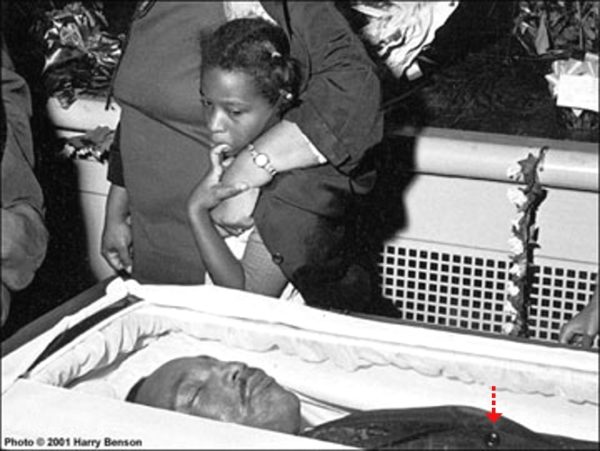


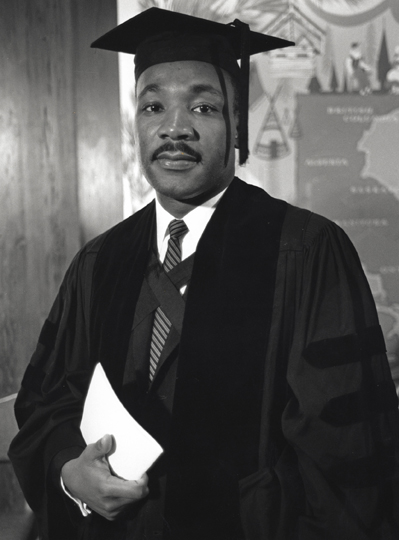
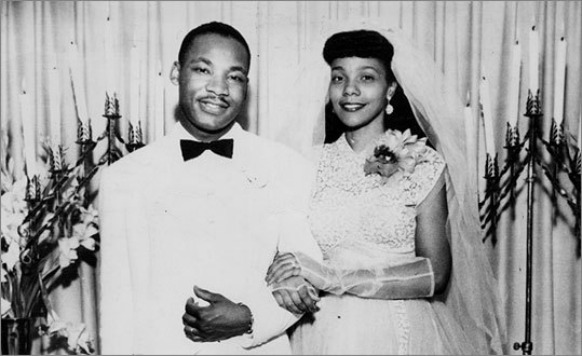
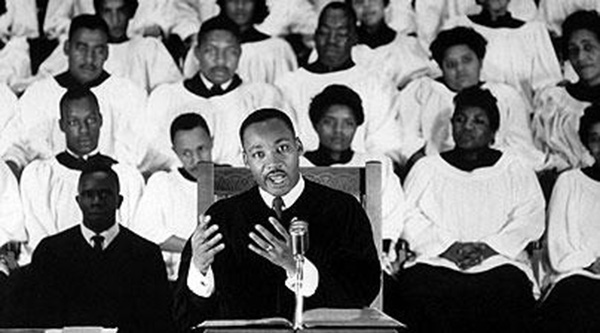
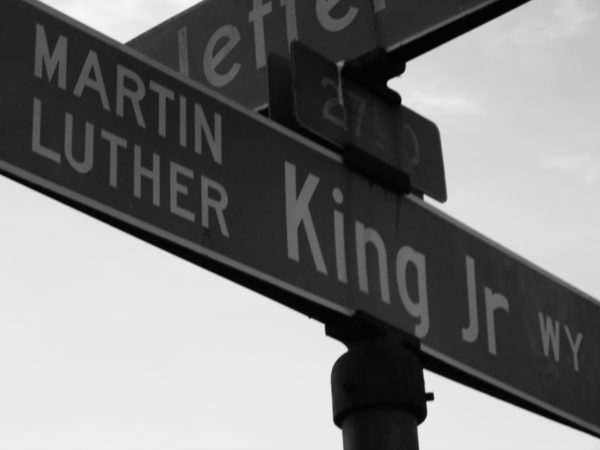




 trade,’ but involved brutal terror against non-cooperation and stiff opposition. Captain Lord Esme Gordon Lenox, ‘With The West African Frontier Force,’ describes: “…we stormed down to Amassana, which was a town supposed to be friendly and fined them 25 goats and 20 chickens for non-assistance, then returned to Agbeni and burned half…October 1st was spent in continuance of yesterdays incendiraism by burning every town or farm we could see. I shudder to think of how many houses we have destroyed in these two days. On our way back to Egbbeddi in the afternoon we passed by Sabagreia and told our old friend Chief Ijor that most likely we should burn down Sabagreia the next day…”
trade,’ but involved brutal terror against non-cooperation and stiff opposition. Captain Lord Esme Gordon Lenox, ‘With The West African Frontier Force,’ describes: “…we stormed down to Amassana, which was a town supposed to be friendly and fined them 25 goats and 20 chickens for non-assistance, then returned to Agbeni and burned half…October 1st was spent in continuance of yesterdays incendiraism by burning every town or farm we could see. I shudder to think of how many houses we have destroyed in these two days. On our way back to Egbbeddi in the afternoon we passed by Sabagreia and told our old friend Chief Ijor that most likely we should burn down Sabagreia the next day…” hip: President Obasanjo was childhood
hip: President Obasanjo was childhood 